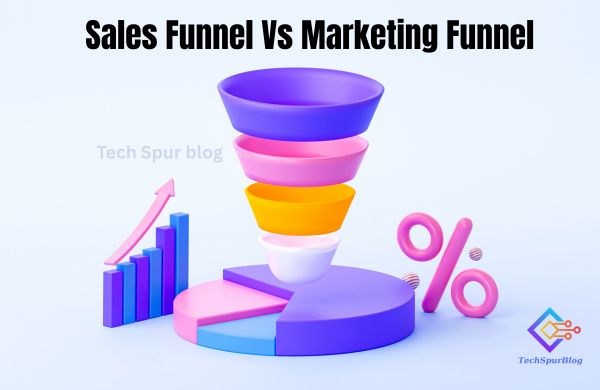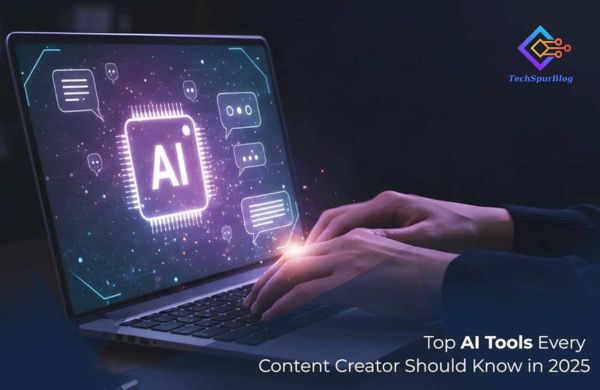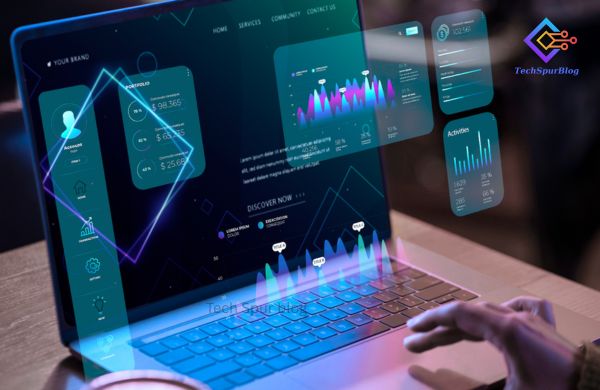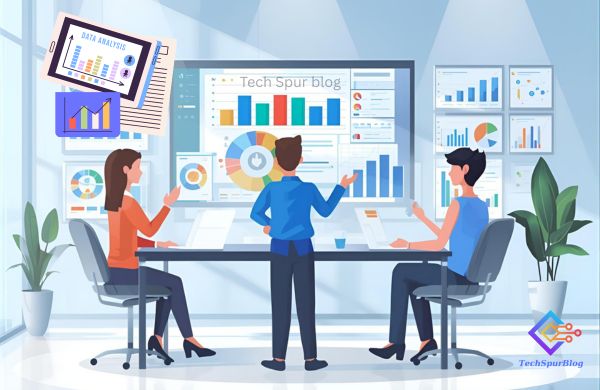The future of marketing is no longer waiting for trends, it’s about predicting. Businesses are using predictive marketing so they can have the edge and to be in front of trends. So, what is predictive marketing? Predictive marketing is a data-driven technique in general, using AI in marketing enables us to forecast customer behavior, sales patterns, and the results of marketing campaigns well in advance.
Marketers can now use tools that measure current and previous patterns of data to make quicker decisions. In today’s competitive B2B landscape, not using AI to predict buyer behavior and future marketing trends will only cause you to lose out on growth opportunities. AI uncovers what the customers are looking for, when they want the information, and the preferred method for reaching them.
Let’s have a deeper understanding on how it evolved and what are its key components.
What Is Predictive Marketing?
Predictive marketing is based on using data and technology to identify future behavior, preferences, and market trends. It began by leveraging past sales and customer interactions which has evolved to include new datasets and predictive algorithms. Therefore, as a result businesses can make better marketing decisions before trends even occur.
Also Read: Future-Proofing Your Business: 7 Key Strategies for Legacy Application Modernization
Key Components of Predictive Marketing
-
- Machine Learning: it is an artificial intelligence system that continuously learn from data to improve performance. It finds patterns hidden in your data and predicts the next steps your customers will likely take.
- Big Data Analytics: It helps in finding hidden trends and buying signals, by examining the vast amounts of customer data.
- Customer Data Platforms: This platform gathers and unifies customer data from multiple marketing tools to show a single, holistic, and interactive view of each customer.
- Behavioral Scoring: With behavioral scoring, consumers are being scored based on their online behaviors for instance by clicks, downloads, page view, to estimate the likelihood of a consumer to buy your product.
How AI Powers Predictive Marketing?
Data gathering & Integration:
Predictive marketing begins with data. However, it’s not just about any data it’s about clean, structured, and organized data. The stronger the data you can feed into the AI, the better outputs it can produce. It can be great to take data from various places such as web pages, emails, CRMs, and social media because AI thrives on productive combinations of these types of information.
AI Algorithms & Models:
AI understands data through an intelligent approach. Common predictive models include:
- Regression Model: Predicts a number such as future sales or future revenue.
- Clustering Model: Groups customers with similar traits or behaviors.
- Decision Tree Model: Moves through the data by creating simple ‘yes’ and ‘no’ paths in order to determine outcomes.
- Neural Networks: More advanced models which mimic the human brain capabilities to identify complex patterns.
Real-Time Processing:
AI helps everyone move at a faster pace. Data processed in real-time allows teams to make faster and smarter decisions.
Example Tools:
There are many platforms with pre-built AI functionality to enable predictive marketing:
- Salesforce Einstein: for smarter sales predictions and customer understanding.
- Adobe Sensei: for delivering insights on customer journeys.
- HubSpot AI: for improved lead scoring and content recommendations.
- Google Analytics Predictive Metrics: for forecasting user activity on your site.
Also Read: Comparing the Sales Funnel and the Marketing Funnel
How AI Predicts What Buyers Will Do Next?
- Understanding Customer Intent: AI helps businesses understand what customers will do next. It can predict important actions like, who is most likely to buy, who is going to stop using your service, and who will keep coming back. This is how AI can give Marketers a better view of a customer’s journey.
- Segmentation & Personalization: With AI, you can segment customers based on predicted action and create hyper-targeted campaigns. These campaigns are more personal and the most likely to achieve results, as they offer more targeted content based on actual data and predicted scores.
- Behavioral Indicators: AI is always hunting for small signals (like hunting a link, spending more time on a page, opening an email, etc. Behavioral indicators help marketers send the right message at the right time, automatically.
Here are some use cases given below:
- Retail: Recommending the next product a shopper might want.
- SaaS: Predicting which trial users are likely to become paid customers.
- B2B: Identifying the best high-value leads that are ready for outreach.
These are just examples of using AI to predict customer behavior that helps businesses increase engagement, increase conversions, and decrease drop-offs.
Trend Prediction Using Artificial Intelligence in Marketing
Market Trend Tracking:
AI analyzes enormous amounts of data including social media posts, social media signals, search engine trends, and news articles. AI identifies patterns and signals of things that are getting popular. In doing so, it helps business leaders see market trends ahead of their competitors.
Guiding Product Strategy:
Predictive models can assist in decisions of what to build next. By analyzing customer feedback, purchase behavior, and usage data, AI provides owners and teams with valuable insights, to guide a product development and minimize the risk of launching something that customers don’t want.
Campaign Planning:
AI can help improve campaign timing because it can anticipate when demand is about to spike. This enables marketers to plan when they launch products, when to run ads, and offers, when they think the interest on peak. This can lead to better results and more effective expenditure.
Also Read: 7 Tips for Maintaining Accurate Customer Data and Reducing Financial Risk
Benefits of Predictive Marketing
Improved ROI:
One of the primary benefits of predictive marketing is improved return on investment. AI helps you target the correct audience with the right message, leading to greater conversion and better use of your marketing budget.
Maximized Efficiency:
It prevents you from taking chances on guesswork. You do not want to spend money on advertising or launching campaigns that will not help you. Predictive Marketing, saves your time and energy to spend on things that work.
Enhanced Customer Experience:
AI-powered marketing allows you to know what each customer wants and deliver personalized content. Your communications are more relevant, which increases customer satisfactions, hence enhancing customer experience.
Improved Decision Making
It involves making smart and fast decisions, informed by data. This means you are able to program your campaigns in advance, launch in appropriate time, and have an idea of the market shifts.
What Are the Key Challenges of Predictive Marketing?
Data Privacy and Compliance:
With AI applications in marketing comes the important issue of dealing with customer data. Businesses have a legal obligation to follow the requirements such as GDPR and CCPA with respect to the transparency of how data is collected and used. Trust is important and customers have a right to expect their privacy is respected.
Model Bias and Inaccuracy:
AI predictions are entirely dependent on the data. If there are biases or the data is missing information, then it is likely to have the results that are biased or incorrect. There is a need to constantly monitor AI models to ensure they are still developing accurate decisions and treating all customers equally.
Technical Limitations:
Predictive marketing tools require quality data and quality people to perform effectively. Without these components, the results will not meet expectations. It is up to the businesses to make an effort to train and to do quality check of the data to use AI properly.
Frequently Asked Questions
What is predictive marketing? How does predictive marketing work?
Predictive marketing is forecasting of customer behavior and future trends by using AI. It is meant to help businesses make better marketing decisions by outlining what will likely happen next.
Does predictive marketing improve my ROI?
Predictive marketing eliminates waste and increases conversion by reaching the right people, with the right message, at the right time to generate better AI marketing ROI.
What kind of data do I need for predictive marketing?
You will need clean and structured customer data such as their purchase history, website returns, email interaction, and social interactions. Assuming you can organize data well, the better the data in, the better the predictions.
Is predictive marketing only for larger companies?
No. Even small and mid-sized B2B companies can use predictive tools. There are many platforms, like HubSpot, Salesforce, or Google Analytics, that have built-in features that you can use quite easily.
Are there any risks to using artificial intelligence in marketing?
Yes. There are risks including data privacy issues, biased models, or bad quality data. As long as you are compliant with regulations like GDPR, your models are fair, and you have a good team to manage the tools, the risks can be mitigated.


















